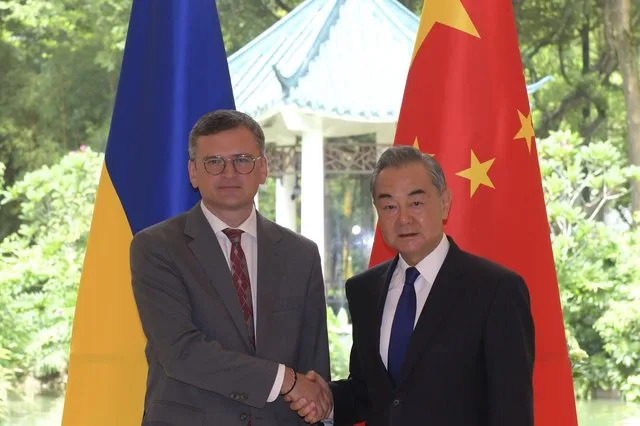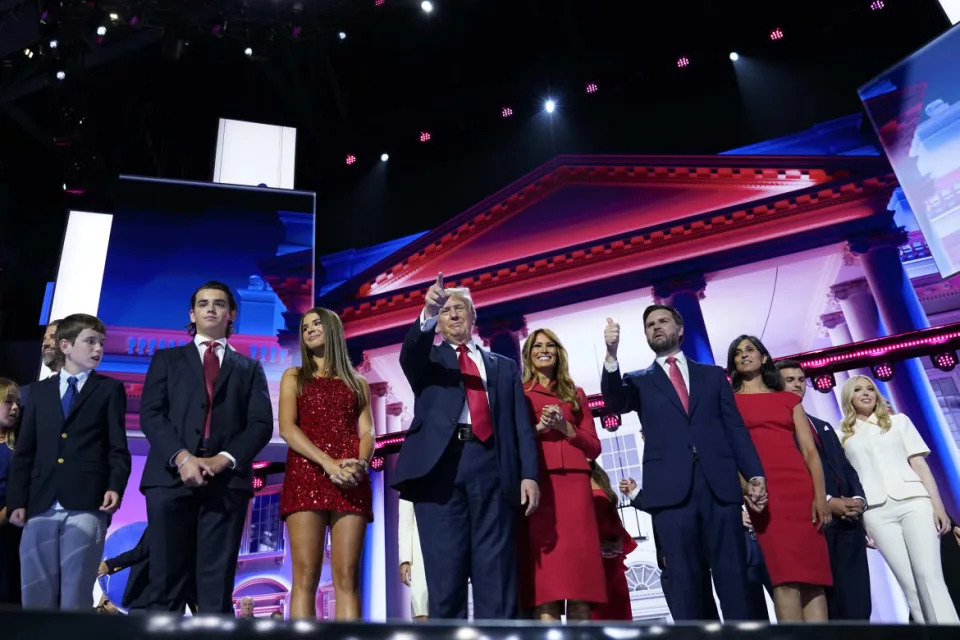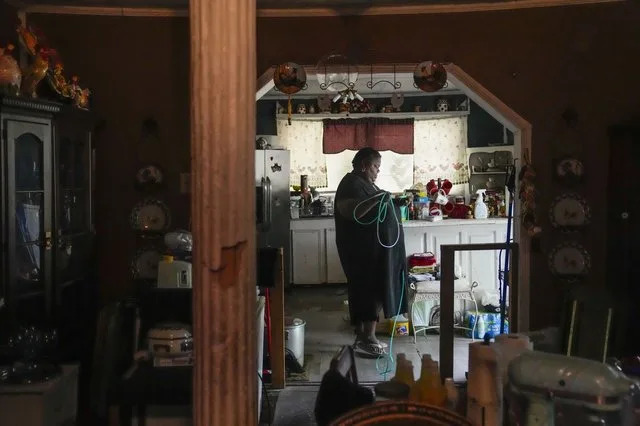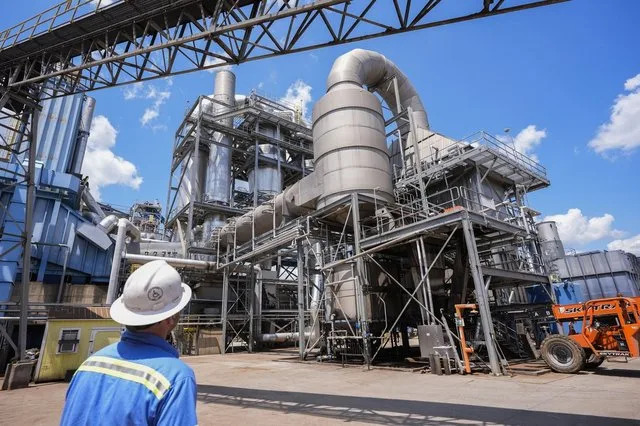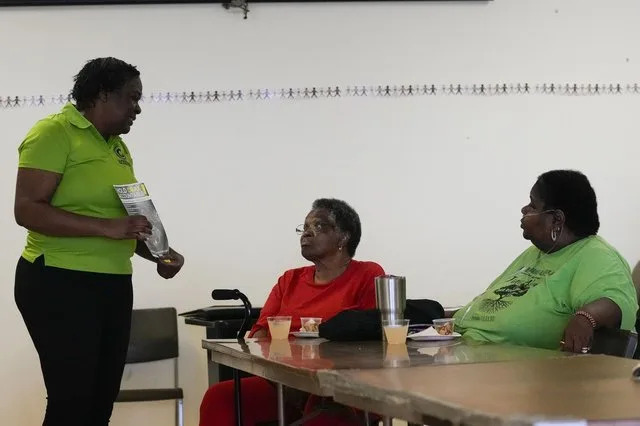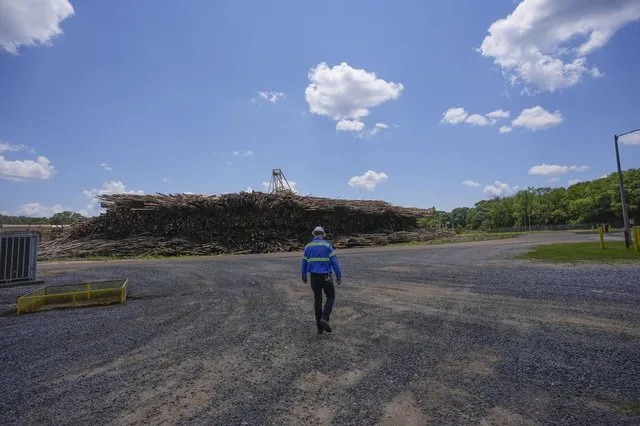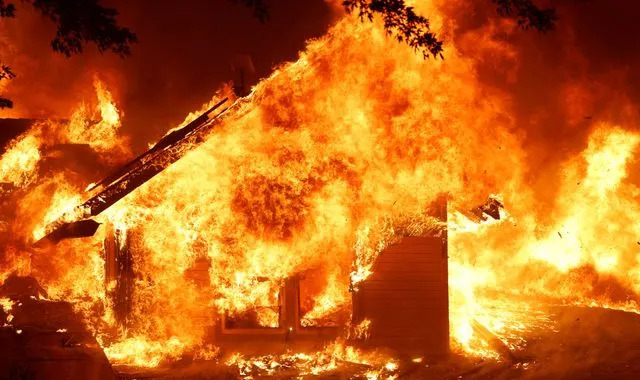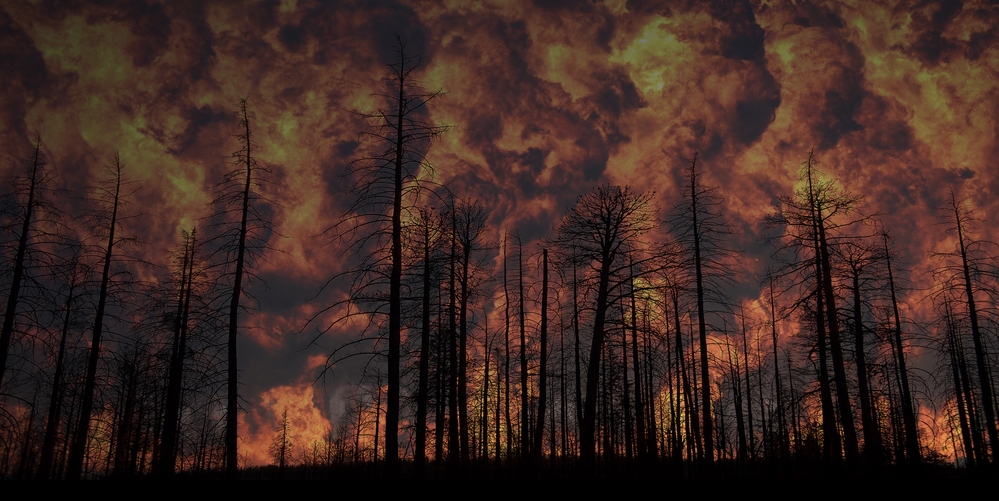CBC
Fri, July 26, 2024

The Umicore plant broke ground in 2023, but the company now says it's launched a strategic review to maximize future business value in battery materials. (Dan Taekema/CBC - image credit)
After breaking ground in 2023, the company building a plant to produce battery components for electric vehicles in a municipality near Kingston, Ont., says it's delaying construction of the plant citing a slowdown in EV sales.
In a statement to CBC News, Umicore Rechargeable Battery Materials Inc. said Friday that its project in Loyalist Township is impacted by the "significant worsening of the EV market context and the impacts this has on the entire supply chain."
The project carried a total price tag of up to $2.76 billion and was projected to create 600 jobs in the region back in 2023. According to a news release at the time from Innovation, Science and Economic Development Canada, the federal government was slated to invest up to $551.3 million.
The province was to pay up to $424.6 million, but a source familiar with the project said that as of Friday, no provincial money has flowed to Umicore.
Umicore cited a situation on June 12 when it announced that a contract with a Chinese manufacturer would not materialize. The company said its legacy contracts were tailing off faster than anticipated and there's a delay in the "ramp-up of contracts" in Europe.
"For Umicore, customers' demand projections for our battery materials have steeply declined recently," the statement reads.

Officials pose with shovels on Oct. 16, 2023 to mark the new plant to build electric vehicle batteries.
Officials pose with shovels in October 2023 to mark the construction of a new battery components plant. (Dan Taekema/CBC)
The company said it's realigning its operations "to the new market reality," adding that a part of accomplishing this involves a "thorough review" of its battery materials business.
It's planning to present the conclusion of that review on its capital markets day during the first quarter of 2025.
Canada responds to market, not vice versa: prof
Greig Mordue, an associate engineering professor at McMaster University, says both federal and provincial governments wanted to be early in the market.
"They wanted to be first, and that's fine if you're making a market but the reality of it is Canada's auto industry is made up of suppliers or affiliates of globally owned companies," Mordue said.
Mordue stated that the government has spent or committed tens of billions of dollars but the industry is simply not there yet.
He said Umicore is not the only company taking a pause to evaluate its standing and wait for the market to catch up, referencing Ford which also recently scaled back its EV production.
Locals and mayor weigh in
Kathleen Palmer, a resident of Bath, Ont., told CBC News that she's unsurprised by the news but is disappointed.
"It would have provided more employment in the area and it would have helped provide some additional services to our community because right now we have to go Kingston or Napanee for any kind of shopping," said Palmer.
She does believe that in the long-term, development will happen in the area with or without the plant.
"The plant it might've pushed it along a little faster," she said.
Loyalist Township Mayor Jim Hegadorn said he understands there will be a delay with construction while the review is completed but insisted "the project is not shut down."
Hegadorn said the township expects to receive more insight in the fall and is confident the project will proceed.
He added that Loyalist is in a good place economically and has seen steady growth over the years.

Umicore profit slumps on weak EV demand, takes 1.6 billion euro writedown
Updated Fri, July 26, 2024
By Mathias de Rozario and Olivier Sorgho
(Reuters) -Metals recycling group Umicore reported on Friday a 24% fall in half-year core profit and booked a 1.6 billion euro impairment for its battery materials division in the face of weak demand for electric vehicles.
The maker of catalytic converters and battery materials for carmakers has decided to postpone a "large scale" investment in an unspecified battery recycling plant in Europe due to EV market weakness.
It will also delay a battery materials plant investment in Canada as it launches a strategic review of its business.
Asked about the battery plant delay on a call with reporters, Canada Finance Minister Chrystia Freeland said, "These kinds of major transformations are never a straight line. There are always bumps along the way."
Umicore's shares were down 2.6% at 0943 GMT.
"The market context is challenging and we have seen a slowdown in the growth of EV sales in the short and mid term," CEO Bart Sap told analysts.
It now expects production at the European battery recycling plant to start in 2032 at the earliest.
"The low visibility on underlying market trends and technology choices has dented investor confidence, but the current valuation seems attractive," said KBC analysts in a note.
Umicore's adjusted core profit (EBITDA) fell 24% to 393 million euros ($426.68 million), missing the 398.5 million expected by analysts in a company-provided consensus.
Profits at the battery materials division fell 99% to 1 million euros. The group said the 1.6 billion impairment would reflect lower values of some of its plants and equipment.
Umicore last month lowered its 2024 profit forecast, citing weak demand projections for battery materials due to the EV slowdown.
The company on Friday confirmed its full-year guidance for core profit at group level, but forecast that the battery materials division would have an operating profit below break-even in 2025 and 2026.
The company specialises in nickel, manganese and cobalt battery materials, and faces additional pressures as some car-makers switch to cheaper lithium-ion phosphate components.
CEO Bart Sap told analysts the two types of batteries can coexist on the market.
In June, Umicore announced job cuts at its German business producing automotive catalysts, which helps reduce emissions in gasoline and diesel engines.
($1=0.9211 euros)
(Reporting by Olivier Sorgho and Mathias de Rozario; Additional reporting by David Ljunggren in Ottawa; Editing by Clarence Fernandez, Jason Neely and Jane Merriman and Richard Chang)

